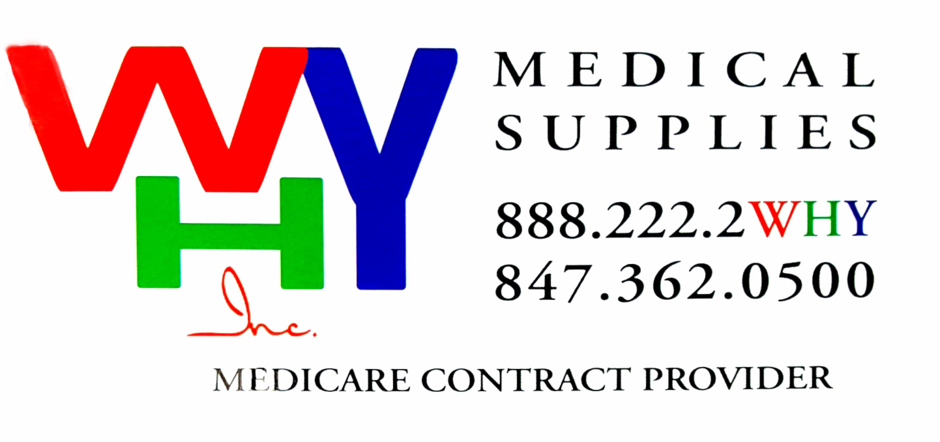
CPAP DEVICES & ACCESSORIES
As of January 1, 2014, a few changes have been made in order to obtain a new CPAP device.
Indications and Limitations of Coverage and/or Medical Necessity
For any item to be covered by Medicare, it must 1) be eligible for a defined Medicare benefit category, 2) be reasonable and necessary for the diagnosis or treatment of illness or injury or to improve the functioning of a malformed body member, and 3) meet all other applicable Medicare statutory and regulatory requirements. For the items addressed in this local coverage determination, the criteria for "reasonable and necessary", based on Social Security Act §1862(a)(1)(A) provisions, are defined by the following indications and limitations of coverage and/or medical necessity.
For an item to be covered by Medicare, a detailed written order (DWO) must be received by the supplier before a claim is submitted. If the supplier bills for an item addressed in this policy without first receiving the completed DWO, the item will be denied as not reasonable and necessary.
Definitions
Apnea is defined as the cessation of airflow for at least 10 seconds.
Hypopnea is defined as an abnormal respiratory event lasting at least 10 seconds associated with at least a 30% reduction in thoracoabdominal movement or airflow as compared to baseline, and with at least a 4% decrease in oxygen saturation.
The apnea-hypopnea index (AHI) is defined as the average number of episodes of apnea and hypopnea per hour of sleep without the use of a positive airway pressure device. For purposes of this policy, respiratory effort related arousals (RERAs) are not included in the calculation of the AHI. Sleep time can only be measured in a Type I (facility based polysomnogram) or Type II sleep study (see descriptions below).
The respiratory disturbance index (RDI) is defined as the average number of apneas plus hypopneas per hour of recording without the use of a positive airway pressure device. For purposes of this policy, respiratory effort related arousals (RERAs) are not included in the calculation of the RDI. The RDI is reported in Type III, Type IV, and Other home sleep studies.
If the AHI or RDI is calculated based on less than 2 hours of sleep or recording time, the total number of recorded events used to calculate the AHI or RDI (respectively) must be at least the number of events that would have been required in a 2 hour period (i.e., must reach ≥30 events without symptoms or ≥10 events with symptoms).
Initial Coverage (new CPAP patients)
In this policy, the term PAP (positive airway pressure) device will refer to both a single-level continuous positive airway pressure device (E0601) and a bi-level respiratory assist device without back-up rate (E0470) when it is used in the treatment of obstructive sleep apnea.
- An E0601 device is covered for the treatment of obstructive sleep apnea (OSA) if criteria A – C are met:
- The beneficiary has a face-to-face clinical evaluation by the treating physician prior to the sleep test to assess the beneficiary for obstructive sleep apnea.
- The beneficiary has a sleep test (as defined below) that meets either of the following criteria (1 or 2):
- The apnea-hypopnea index (AHI) or Respiratory Disturbance Index (RDI) is greater than or equal to 15 events per hour with a minimum of 30 events; or,
- The AHI or RDI is greater than or equal to 5 and less than or equal to 14 events per hour with a minimum of 10 events and documentation of:
- Excessive daytime sleepiness, impaired cognition, mood disorders, or insomnia; or,
- Hypertension, ischemic heart disease, or history of stroke.
- The beneficiary and/or their caregiver has received instruction from the supplier of the device in the proper use and care of the equipment.
If a claim for an E0601 is submitted and all of the criteria above have not been met, it will be denied as not reasonable and necessary.
- An E0470 device is covered for those beneficiaries with OSA who meet criteria A-C above, in addition to criterion D:
- An E0601 has been tried and proven ineffective based on a therapeutic trial conducted in either a facility or in a home setting.
Ineffective is defined as documented failure to meet therapeutic goals using an E0601 during the titration portion of a facility-based study or during home use despite optimal therapy (i.e., proper mask selection and fitting and appropriate pressure settings).
If E0470 is billed for a beneficiary with OSA and criteria A-D are not met, it will be denied as not reasonable and necessary.
A bi-level positive airway pressure device with back-up rate (E0471) is not medically necessary if the primary diagnosis is OSA. If an E0471 is billed with a diagnosis of OSA, it will be denied as not reasonable and necessary:
If an E0601 device is tried and found ineffective during the initial facility-based titration or home trial, substitution of an E0470 does not require a new initial face-to-face clinical evaluation or a new sleep test.
If an E0601 device has been used for more than 3 months and the beneficiary is switched to an E0470, a new initial face-to-face clinical evaluation is required, but a new sleep test is not required. A new 3 month trial would begin for use of the E0470.
Coverage, coding and documentation requirements for the use of E0470 and E0471 for diagnoses other than OSA are addressed in the Respiratory Assist Devices (RAD) Local Coverage Determination (LCD) and related Policy Article (PA).
